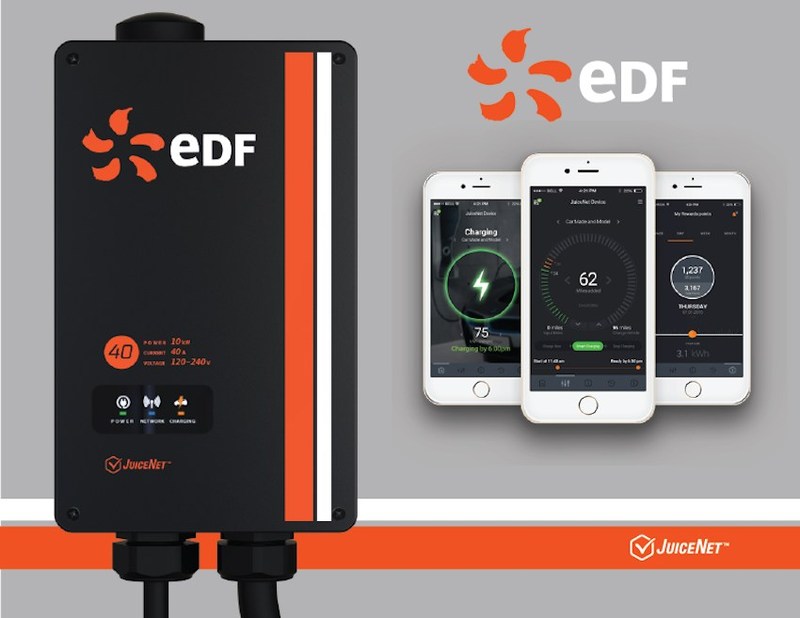September 20, 2017 | News Brief | eMotorWerks has announced a new partnership with EDF. The partnership provides EDF with cloud-connected and intelligent charging stations (EVSE) using eMotorWerks’ charging hardware and its JuiceNet software platform. The charging solution aims to empower customers to charge their EVs on clean energy, while providing a valuable software platform on which EDF can develop new solutions.

“Electrification of the transportation sector is essential for reaching our ambitious decarbonization goals,” said Jan van der Lee, vice president of R&D and Innovation at EDF. “EDF has studied EVSE platform technology for a number of years, and eMotorWerks, with its state-of-the-art and fast-learning platform solution and expanded list of charging hardware options, has shown to be a viable partner from a technical and commercial standpoint. And the grid service capabilities give utilities the option to keep fossil fuel generation sources dormant and meet peak load requirements through demand response.”
By utilizing JuiceNet smart-grid optimizations, EDF will be able to leverage renewable energy generation by tapping into solar and wind over-generation to charge EVs, as well as partake in smart grid incentives through scheduled charging. This collaboration allows EDF and its customers to shape electric load, avoid peak energy costs, and improve grid reliability by better managing energy ramps and other peak demand on the grid.
The growing eMotorWerks software and grid services business is enabled by its JuiceNet platform, which employs automated, multi-tiered control algorithms and load balancing to allow EV drivers the flexibility to charge their cars on the cleanest and least expensive energy available. The JuiceNet platform gives utilities improved real-time visibility of major grid parameters and control of EV charging demand. With this visibility, eMotorWerks helps grid operators and utilities improve load distribution and grid stability while minimizing the need for expensive generation or transmission & distribution infrastructure upgrades.







